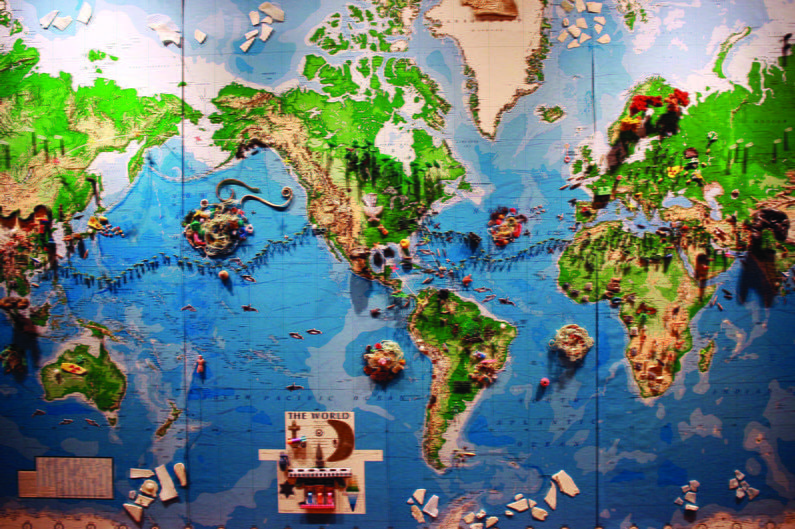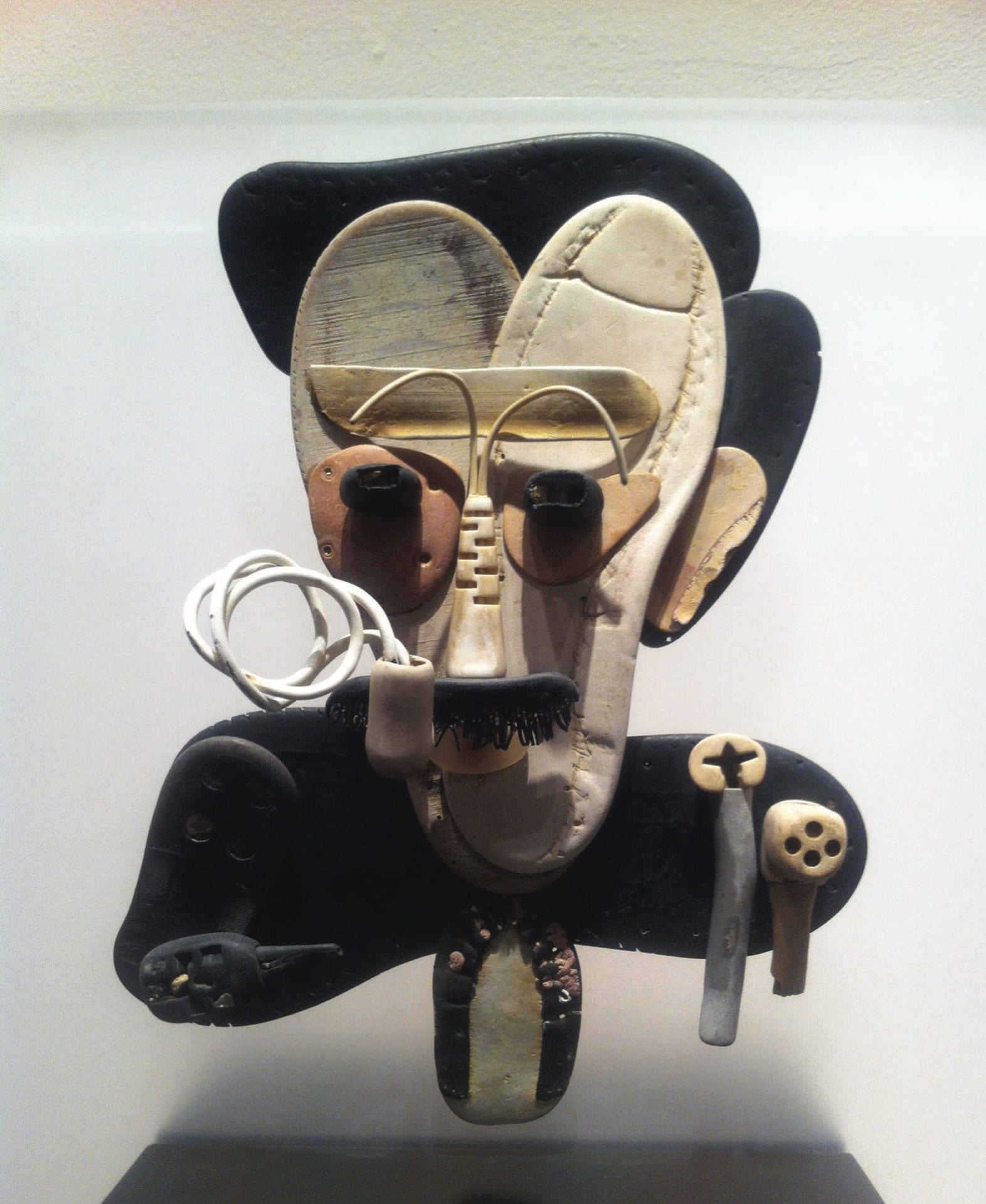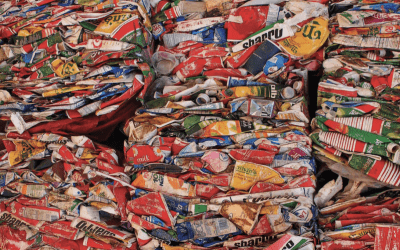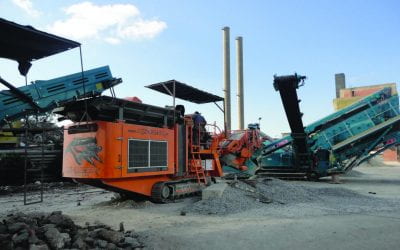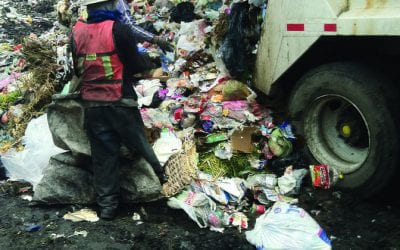A Present from the Sea
The Work of Nick Quijano
From the center of the Puerto Rican Cordillera Central’s green backbone, one can see the clear blue line of the horizon. Being on an island, we live, breathe and feel the constant presence of the sea. But, like estranged lovers, we choose to look inland, away from the ocean and refuse to contemplate the rhythm of the waves that visit us from faraway places. That is not the case of artist Nick Quijano.
Quijano knows a beach which beckons him, and its waves, like generous friends, are plentiful with unexpected gifts in his frequent visits to its shore. As a sanjuanero since 1980, Quijano discovered Cascajo Beach to the east of La Perla—San Juan’s mythical slum—where the Atlantic Ocean regularly returns the debris discarded elsewhere by humans. The sea lovingly washes, polishes, takes away all utilitarian vestige and deposits the trash ashore so that it may reincarnate in a life not pragmatic, but aesthetic, through Quijano’s hands.
For a prosaic eye the sand is shamefully covered with garbage. Yet, to a keen gaze, the beach is full of possibilities, a veritable quarry made up of diverse and enticing pieces of a puzzle, its possibilities awaiting the call of imagination. Quijano will collect them, wash them, classify them and later combine them into assemblages, three-dimensional collages, new cultural objects with their own stories to tell.
There are certain self-imposed rules to this creative process: first, the assemblages or artefactos must all come from material washed ashore on this beach; second, it must be plastic and industrial refuse, result of the processing of fossil fuel; third, it must be polished by a long stay in deep waters, sometimes even encrusted with corals, shells or pebbles, or simply scraped by the ocean floor. As a sign of respect and sacralization, these pieces will be incorporated without any adjustment: no cutting or bending, seen as a mutilation of the object. Its identity cannot be veiled or masked but always must be recognizable amidst the other components; e.g, a comb must remain a comb even as one may see it as a mustache.
The eye “sees” new objects, infers connections or recognizes resemblances as the mind creates them out of the juxtaposition of elements. So the myriad of “sculptures” rises. The artist then calls them “personages”—as actors in a play—cultural types more than individuals: a brainy man smoking a pipe, a bitchy blonde, a dreamy heartbroken lover… The pieces can also morph into strange ideograms of long lost civilizations; maquettes of ancient/future cities or of postindustrial ghost towns. Plastic bottles can be seen as clouds; ropes and wires can become gigantic nests. Whimsical creatures—à la Arcimboldo—can exist as a Frankensteinian moment, remaining only as a photograph.
The artist is creating a narrative both simple and complex: Where do we come from? Where are we going? We know about prehistory from its stone artifacts, we know about the Neolithic era from its copper, bronze or iron weapons. What are we leaving as evidence of our moment in time? Of course, it is plastic and all the petroleum derivatives that make up every aspect of our contemporary life. The sea returns this refuse; it is not biodegradable. Ours is still the time of “black gold” and yet this time is also destined for extinction. Art made out of discarded plastic is a testament to a disappearing epoch.
Quijano, through his work, unveils the “techne”—human intervention on the materials of art—questions the “thelos”—a work’s finality and its dissolution in a new meaning—and unmasks its being as something useless in the world of consumption—garbage—while he transports it into the other realm of uselessness: as a work of art.
Winter 2015, Volume XIV, Number 2
Sonia Cabanillas is a philosophy, literature and humanities professor at Universidad Metropolitana, Cupey campus, Puerto Rico. She has written extensively on Puerto Rican art, including the work of Nick Quijano.
Related Articles
Garbage: Editor’s Letter
Religion is a topic that’s been on my ReVista theme list for a very long time. It’s constantly made its way into other issues from Fiestas to Memory and Democracy to Natural Disasters. Religion permeates Latin America…
Buenos Aires, Wasteland
English + Español
Walking down Avenida Juan de Garay last week, I passed a giant black trash bag that had ballooned and burst. Orange peels, tomatoes, candy wrappers…
First Take: Waste
Waste—its generation, collection and disposal—is a major global challenge in the 21st century. Cities are responsible for managing municipal waste. Solid…

